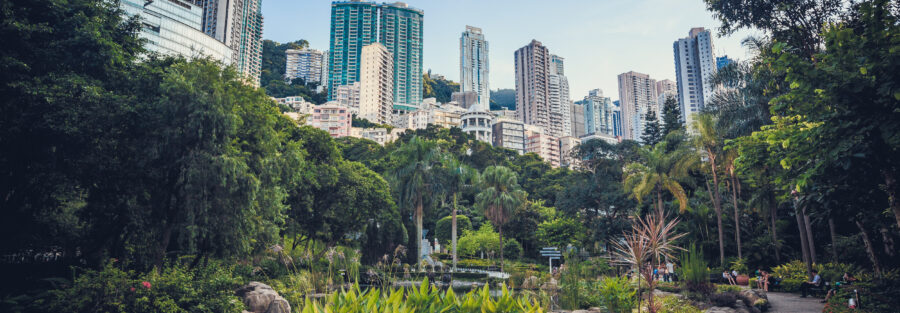As Malaysia continues to urbanize and industrialize, the need for sustainable and eco-friendly building practices has never been more urgent. The push towards green technology in construction is not just about reducing environmental impact but also about creating healthier living spaces and improving energy efficiency. Let’s explore the trends and innovations shaping the future of green technology building in Malaysia.
Embracing Renewable Energy
One of the most promising trends is the integration of solar power into building designs. With Malaysia’s abundant sunshine, solar panels on rooftops and building facades are becoming increasingly common. Innovations in solar technology, such as more efficient photovoltaic cells and building-integrated photovoltaics (BIPV), are making it easier and more cost-effective to harness solar energy.
Wind and Geothermal Energy
While solar power leads the way, there is also growing interest in wind and geothermal energy. Small-scale wind turbines and geothermal heat pumps are being explored for their potential to provide sustainable energy solutions for buildings, particularly in rural and remote areas.
Advanced Building Materials
The use of sustainable materials is a key component of green building. In Malaysia, there is a shift towards using recycled and locally sourced materials to reduce the carbon footprint of construction. Bamboo, reclaimed wood, and recycled metal are gaining popularity as they offer durability and sustainability.
High-Performance Insulation
Innovations in insulation materials are improving energy efficiency in buildings. High-performance insulation, such as aerogels and vacuum insulated panels (VIPs), provide superior thermal resistance, reducing the need for heating and cooling and lowering energy consumption.
Smart Building Technologies
The integration of IoT in building management systems is revolutionizing how buildings operate. Smart sensors and automated systems can monitor and control lighting, temperature, and security in real-time, optimizing energy use and enhancing occupant comfort. In Malaysia, smart buildings are becoming more prevalent, especially in urban centers.
Energy Management Systems
Advanced energy management systems (EMS) are being adopted to monitor and optimize energy consumption. These systems use data analytics to provide insights into energy usage patterns and identify opportunities for savings. By integrating renewable energy sources and storage solutions, EMS can significantly reduce a building’s environmental impact.
Building Automation
Automation systems enable efficient control of building operations. This includes HVAC systems, lighting, and even security, contributing to reduced energy consumption and improved safety and comfort for occupants.

Water Conservation Techniques
Malaysia’s tropical climate provides ample rainfall, making rainwater harvesting a practical solution for water conservation. Innovative systems for collecting, filtering, and storing rainwater are being incorporated into building designs to reduce reliance on municipal water supplies and promote sustainable water use.
Greywater Recycling
Greywater recycling systems treat and reuse wastewater from sinks, showers, and washing machines for non-potable uses such as irrigation and toilet flushing. This reduces water consumption and lessens the burden on sewage treatment facilities, contributing to more sustainable water management.
Low-Flow Fixtures
The adoption of low-flow fixtures and appliances helps in reducing water usage without compromising performance. These fixtures are designed to provide the same level of service with less water, supporting overall conservation efforts.
Green Building Certifications
LEED certification is becoming a benchmark for green buildings in Malaysia. Projects that achieve LEED certification demonstrate a commitment to sustainability and are recognized for their efforts to reduce environmental impact. The adoption of LEED standards is encouraging developers to incorporate green technologies and sustainable practices in their projects.
Green Building Index (GBI)
The Green Building Index (GBI) is Malaysia’s own certification system, tailored to the country’s climate and environmental conditions. GBI-certified buildings are evaluated based on criteria such as energy efficiency, water efficiency, indoor environmental quality, and sustainable site planning. The GBI is driving the development of green buildings by providing a clear framework for sustainability.
Urban Farming and Green Spaces
Urban farming is gaining traction as a way to promote sustainability and improve food security. Rooftop gardens and vertical farming systems are being integrated into building designs, providing fresh produce and green spaces for residents. These green spaces also help mitigate the urban heat island effect and improve air quality.
Green Walls and Facades
Green walls and facades are another innovative trend, adding greenery to urban environments while improving insulation and air quality. These living walls can be used to grow a variety of plants, contributing to biodiversity and creating a more pleasant urban landscape.
Conclusion
The future of green technology building in Malaysia is bright, with numerous trends and innovations leading the way towards sustainability. From renewable energy integration and advanced building materials to smart technologies and water conservation techniques, these developments are transforming the construction industry. By embracing these innovations and promoting green building certifications, Malaysia is paving the way for a more sustainable and environmentally friendly future.


